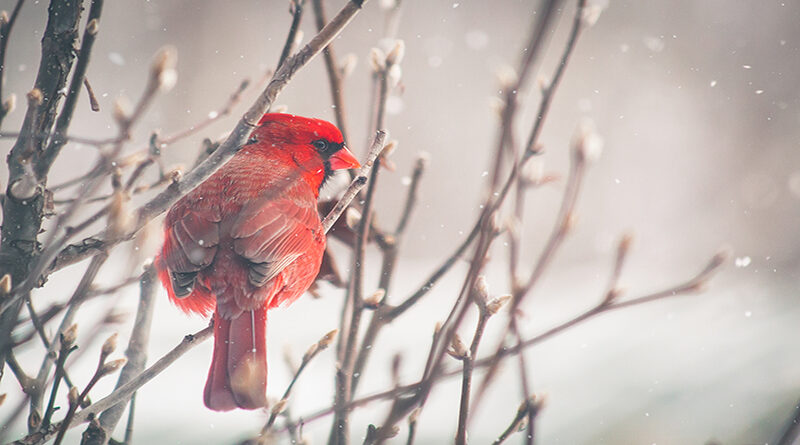Caching & Overwintering
Did you know that not all wild animals hibernate (sleep away the winter) or migrate (leave for better conditions)? Some animals, just like us, need to tough out the long Canadian winter and they do this in the same way we do: finding shelter, storing up food, and getting a thicker coat!
Many of us are familiar with overwintering animals who brighten up our short winter days. Colourful Cardinals, Blue Jays, Chickadees, rabbits, squirrels, among many other species remind us that life is still very much around us. You will notice that there are no amphibians, reptiles, or invertebrates in our list of active winter species – that is because as cold blooded – or more accurately termed, exothermic animals, they cannot regulate their internal body temperature, so their metabolism shuts down and they are forced into hibernation.
Overwintering animals face obvious challenges during a long, cold, and dark season but what could possibly be the benefit for these species to stick around to tough it out?
For many species, the benefits of sticking around through the winter has all to do with territories; if you stick in place, nobody is going to move into your home (whether it be a tree, a bush, a burrow) next spring and leave you out of the next cycle of reproduction!
As a result of this pressure to keep intruders at bay, many overwintering species have adaptations that make this challenge possible. They have insulating feathers that moult in late summer to provide additional protection or grow thicker and denser coats of fur to shield themselves from the cold, and many species will cache food for use during lean times.
What is caching? Caching is a process whereby an animal will find food in addition to its immediate needs and store these foods for later (and leaner times). Squirrels are quintessential mammalian cachers, storing walnuts, acorns, butternuts in holes and hollows throughout their territory in the hopes that they remember where they are when they get hungry; and fortunately for our forests, they usually forget some! Many species of birds do the same. Chickadees, Nuthatches, and especially Blue Jays are particularly good at caching, with studies showing that individual jays can cache over 3,000 acorns in a season by selecting and hiding an average of 107 acorns per day – and remember their cache locations for months!
Why does caching matter to us? Caching matters because these animals have worked for months to build up these stores of reserves for lean times and unfortunately the biggest threat to the survival of their caches (and them!) is often us. After the leaves fall, there is temptation to tidy; to prune or cut trees, remove garden “waste”, and prepare or till soil. All of these actions put caches (and the animals that work so hard to store them!) at major risk at a time of the year when there is no further opportunity to collect more food. The hard season has already begun.
Please resist the temptation to tidy yards, gardens, and trees at this time of year – it could be a life-or-death determination for our wildlife neighbours!
To support wildlife in need, please consider making a donation this season: www.canadahelps.org/en/dn/33851




